Tracking – it’s not all about the footprint
Tracking is the art of interpreting the indirect signs left by other animals, whether it is by humans, mammals or birds.
Knowing how to track in the wild will let us know a lot of important details about those tracks, such as where they are going, and what it is that left them behind.
More importantly, knowing the basics of tracking will help you either catch what left those tracks if you are hunting it, avoid it if you are in a conflict situation, or to find it in a search and rescue situation.
So let’s take a look at 10 things you should know about how to track in the wild.
# 1 Foot impressions without footprints
It is easy to think of tracking as just following nice clear cartoon-style footprints to catch up with the ‘bad guys’ or to track an animal until you find it.
In actual fact, if you spend any significant amount of time tracking you will be relying on signs much more subtle than footprints. Your feet or an animal’s feet only leave those typical footprints in snow, wet sand and soft mud. You will need to be more observant, and look for other things than just footprints if you want to track your subject.
Perhaps leaf litter covers a surface that will take a print and you will be able to look underneath it to find your print, but you can spot those by looking for tell-tale signs amongst the leaves, such as small depressions or wet leaves that have been turned over by the passage of an animal to show the dry undersurface.
This is true on gravel and stony ground too. Stones can be moved to leave the depressions underneath fresh and new or rolled over to show a wet or dry surface underneath or pressed further into soft ground by the pressure of a foot.
Material from one surface can be transferred to another, such as:
- On the sole of a shoe or
- On an animal’s foot;
- Wet sand onto dry mud
- Water onto rock
- Or soil and stones onto grass
You need to be open to all of these signs left by the passage of a human or animal if you are going to get good at tracking.
Another disturbance to the ground that is often seen is this one below. In these situations, grass has been fractured and broken due to someone or something walking through it. These tracks will only last for about a day until the grass has regenerated, but are great as they easily indicate the direction of travel.
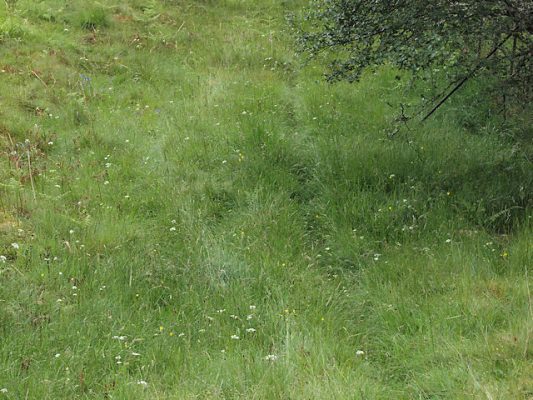
# 2 What do the footprints mean?
If you are lucky enough to find distinct footprints what can you learn from them? They might tell you how fast something is moving, in what direction it is going, how large it is, if you are tracking animals you can learn what species it is from a footprint.
The number of things you can tell from a footprint will vary depending on the quality of the print and the ground it is made on, but a few general rules to do with this are:
- People and animals that are running leave tracks which are generally deeper at the front than at the back.
- If something is moving very fast or beginning a jump often only the front portion of the track will be visible but will be accompanied by a ‘hump’ at the back of the track.
- Landing from a jump often leaves quite deep prints that are more distinct in certain areas. For example, the print left from someone vaulting over a fence or gate might be particularly prominent along one edge of the footprint as this touched the ground first and most forcefully. Similarly, with animals; deer often leave very deep prints on soft ground if they have jumped over something but those prints will be significantly deeper at the front than the back.
- Rapid changes of direction will leave a pressure ‘hump’ or ‘bulb’ on the opposite side of the track to the direction change.
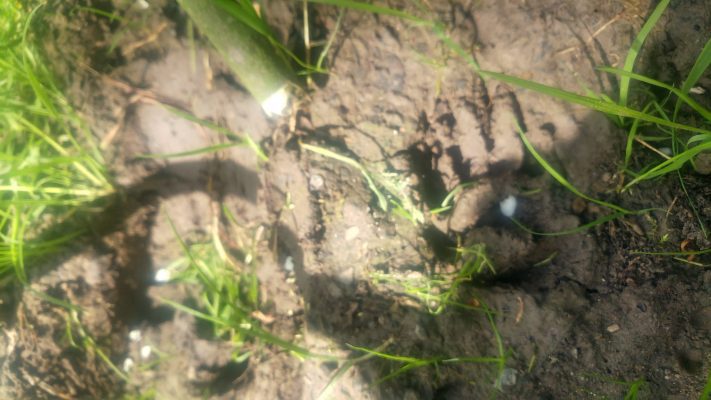
# 3 Tracking isn’t just about footprints
Footprints aren’t all that is going to be useful to the tracker, as often as we follow footprints we refer to other signs as well, such as droppings, feeding signs, disturbed vegetation, local bird calls and animal behavior if we are tracking animals. The same signs can also be true of humans.
You may have to track someone who is lost or use your tracking skills to avoid other people in the wilderness.
For an animal, you may look for signs of feeding from vegetation, or the site of a kill a predatory bird or mammal has made. When tracking humans, you are more likely to be looking for litter, discarded apple cores, scraps, or the site of a fire as a sign of their presence. Additionally, where footprints may not be obvious, game trails might provide a general idea of the presence and path taken by animals and a few features of these trails can help us identify what used them.
Foxes, for example, leave very narrow trails as they stalk along carefully with one foot in front of another, badgers, on the other hand, leave much wider trails and will often transfer mud and other material onto those runs with their large belly’s. That’s not to say a fox won’t use a badger run but a fox run that is exclusively used by foxes can be easily identified.
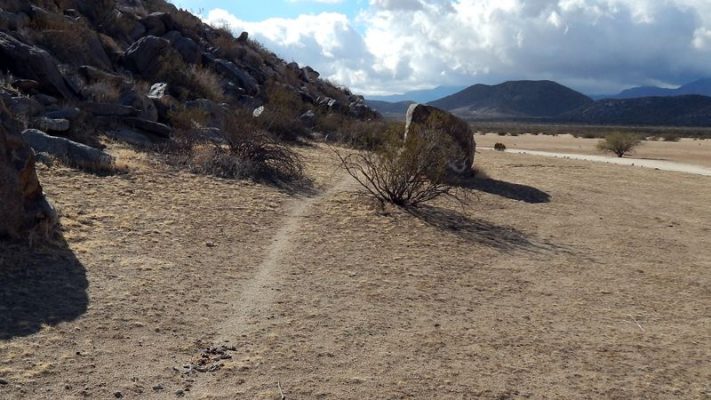
# 4 Animal droppings
As unpleasant as it sounds, droppings can be very useful in identifying the species you are tracking and allow you to make a decision about whether or not to continue your pursuit, or what method of catching that animal you might employ if it is your intention to make a meal of what you are catching.
For example, coming across bear or big cat droppings might cause you to break off following that trail and seek safety rather than pursue a hunt in a survival situation. Whereas finding deer droppings instead of rabbit droppings on your trail might make you re-assess the suitability of your slingshot as a hunting tool in that situation.
Do not discount the importance of looking at droppings, it is easy to gauge the size of a herd of deer for example from the droppings left, and the age makeup of the deer in the herd with a little practice. In fact, deer populations are often surveyed by ecologists using a method called fecal accumulation counting, so a lot of useful information can be gained just from droppings.

# 5 Interpreting feeding signs
While people may leave litter behind, animal feeding signs are much more subtle.
Predators may leave the signs of a kill such as a plucked bird with the breast meat eaten, which may be the work of a bird of prey such as a sparrowhawk. If it is left where it is, it would likely be a male rather than a female as the males are smaller and less likely to carry prey away.
Foxes and other small mammal predators are more likely to carry away their prey, unless disturbed, in which case feathers which are bitten off or ripped out in clumps are a good sign compared to individually plucked feathers which are bent by being gripped in a bird’s beak.
Even if a fox has carried off its prey, clumps of fur, feathers, and blood, as well as disturbed grass and signs of struggle are good signs to follow.
Herbivores leave food signs too. Nibbled vegetation and the height it has been eaten at can tell us a lot. Vegetation that has been eaten above about 1.5 meters height in Europe or north America is likely caused by large deer or cattle. Lower feeding signs could also be those larger herbivores but can be distinguished from the feeding sign of small lagomorphs such as rabbits from the tooth pattern. Deer, for example, only have lower incisors which bites against a gristly pad in the top jaw, when they bite into something there will only be teeth marks at the lower portion of the bite mark and the top portion will be frayed and torn. Rabbits and other small herbivores have opposing sets of incisors so the bites will be cleaner as if cut with scissors.
Again using this method ecologists survey for many species.

# 6 Following a trail
Spotting and interpreting tracks is one thing, but following them requires a bit more complex thinking.
Sometimes game trails are easy to follow if they are used regularly, but how about the challenges of spotting your target amongst the many other tracks, or spotting where something leaves a trail or where a trail disappears into water or impenetrable undergrowth, how can you find it on the other side?
Let’s face it sometimes it will be impossible, sometimes it’s not coming out on the other side of the bramble patch because it lives in there, but that may mean you have just found its burrow or laying up point and now just need to wait for it to reappear.
If you do lose a trail or need to catch up with the person or animal you are tracking, to speed things up you can work in teams to leapfrog ahead and find tracks further ahead, leaving one team member to follow the trail without losing it while others rush ahead to pick it up further ahead and then everyone moves to the furthest point along the trail and fans out again from there.
You can also make educated guesses about where the trail might go and move on hoping to pick up the trail further ahead, having a detailed knowledge of wildlife behavior is useful in these situations, and knowing the ground you are tracking on is a massive benefit too.
# 7 Ageing tracks
Tracks change with time and will eventually soften into nothing as the ground they are formed in dries out or is flattened by the rain, droppings degrade and predator kills are scavenged by carrion feeders.
There are no hard and fast rules as environmental factors will determine how fast droppings break down, the amount of rain will determine how quickly footprints fill with water or are washed away, and the presence of scavengers will determine how quickly kills are dragged off or scavenged to the point where the clues you are looking for nothing short of invisible.
A few general rules for aging tracks are:
- Fresh tracks in firm ground will look sharp and clear. As the action of rain, wind, sun and other environmental factors works on the track they will become less distinct. Very soft ground speeds this process up considerably and a track a few minutes old might already be indistinct in soft and damp ground.
- Droppings tend to dry out over time but you can be tricked by dew or high humidity as they will retain moisture longer or be moistened. Even in wetter areas though, or after a heavy dew, older droppings can be broken apart to show drier material inside if they have been drying for some time.
- Leaves and vegetation that has been freshly fed from will still look fresh but after some time bark will discolor and the nibbled leaves and stems will suffer which will make that sign obvious. Trees or tree branches which have had the bark eaten all the way around, for example, will still look relatively fresh and lush at first but over the course of a few days will start to wilt and die.

# 8 Tracks in snow
Snow is often thought of to be a fantastic medium for tracking and sometimes it is, when it’s relatively shallow.
As soon as it is much deeper than mid-calf, tracks become indistinct and appear as just a trench in the snow.
To determine what you are following, look for the compacted snow at the bottom of the tracks for boot prints, hoof prints or other clues. The width of a trail will also give you an idea of what or how many there are of what it is you are tracking.
Other clues such as droppings and feeding signs along the way will also help. Snow will also catch signs that no other medium can like the feather marks of a bird landing or taking off or its tail dragging behind it as it walks through the snow.
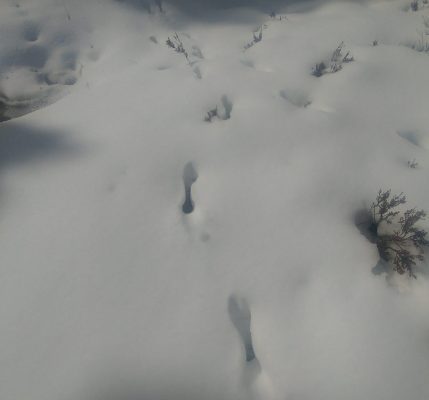
# 9 Tracking birds on the ground
As birds can fly they can be difficult to track but a lot of the birds that might be sought after in a survival situation either spend a lot of time on the ground or can easily be spotted from the ground using your tracking skills.
Pheasants and other ground-nesting game birds will leave distinct and easy to follow game trails to and from water and their nests. The roosts of pigeons can be easily spotted by the accumulation of droppings underneath them and then it is a simple case of lying in wait with a snare on a pole to catch them if the situation warrants it.
As well as birds, which spend a lot of time on the ground being relatively easy to track, birds can help you with your tracking as they react to the presence of other animals and humans. For example, alarm calls of birds can alert you to the presence and approximate location of a predator or human for example. Or if there is a large predator that is unnaturally making a lot of disturbance to the area, you will likely see birds from trees flying away from that direction. In most cases, this would be a sign of a human or group of people.
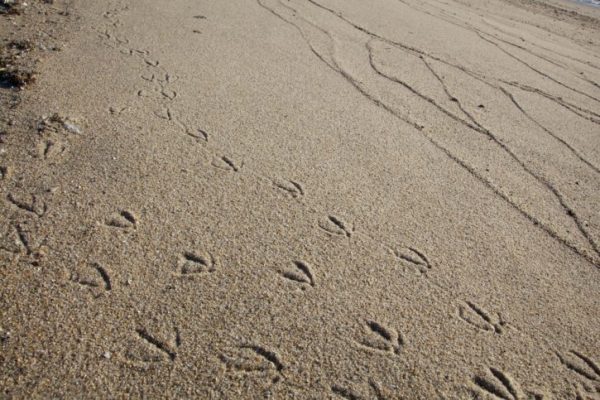
# 10 Tracking humans
You might need to track someone in a search and rescue situation or as part of law enforcement duties.
Luckily humans leave plenty of evidence of their passing unless they are very skilled and careful and don’t want to found, so tracking a human should be much easier than tracking an animal that is native to that area.
A starting point is to look for footprints or shoeprints. Broken vegetation is something you can normally always follow, and is the simplest and easiest path ahead as people don’t want to slog through bramble patches or up sheer rock faces and will almost always follow the path of least resistance. Remember that and it should help you with your tracking.
Over to you…
For ways of covering your tracks and hiding from people, I suggest you read our post on the US Military SERE School (Survival, Evasion, Resistance and Escape). There is a lot of very valuable information in that post, as well as this post, and combined with our other posts on survival outdoors, will surely help you survive any situation.
Following these few tracking tips should help, but remember nothing beats practice and a few field guides to help you learn to identify footprints, droppings and other signs.
